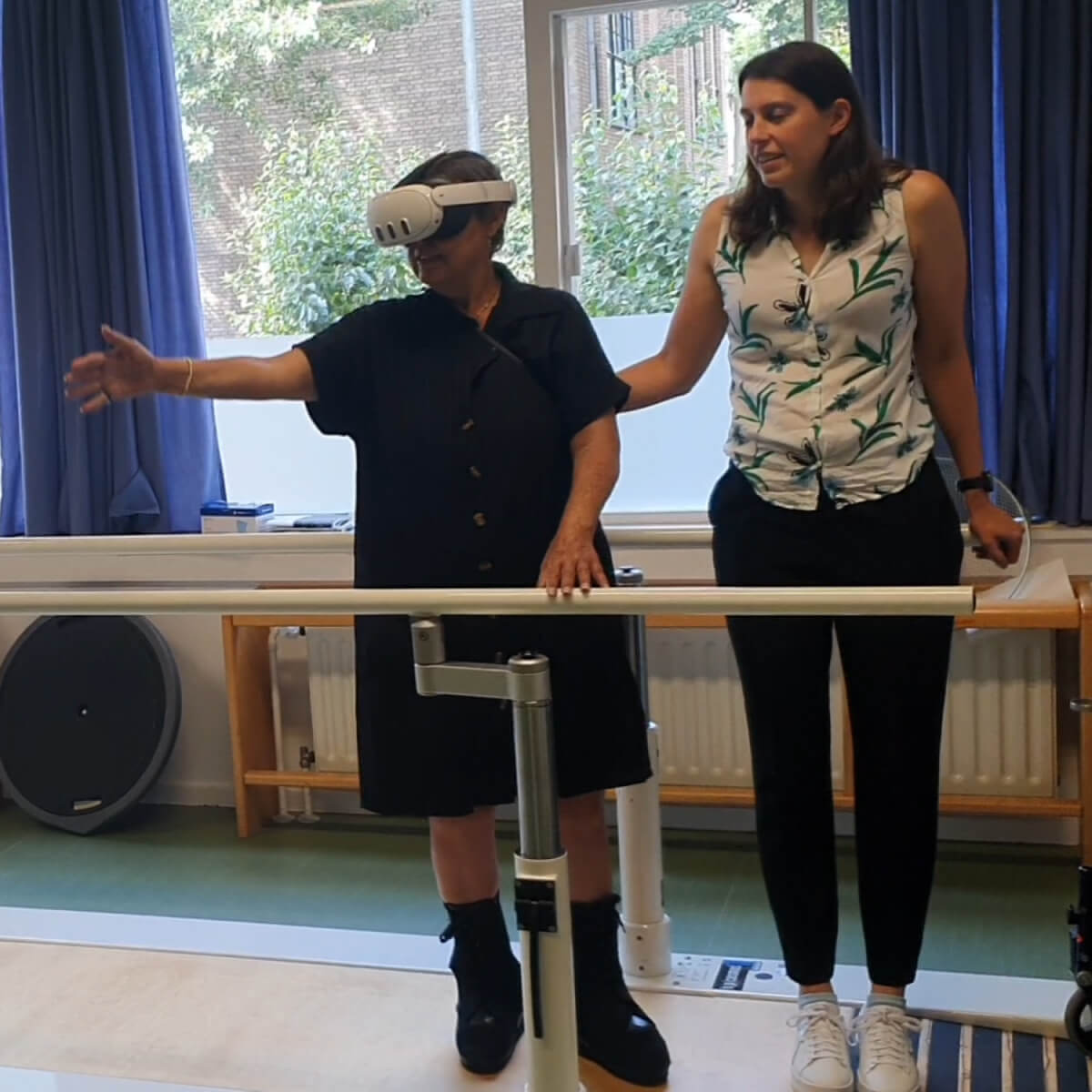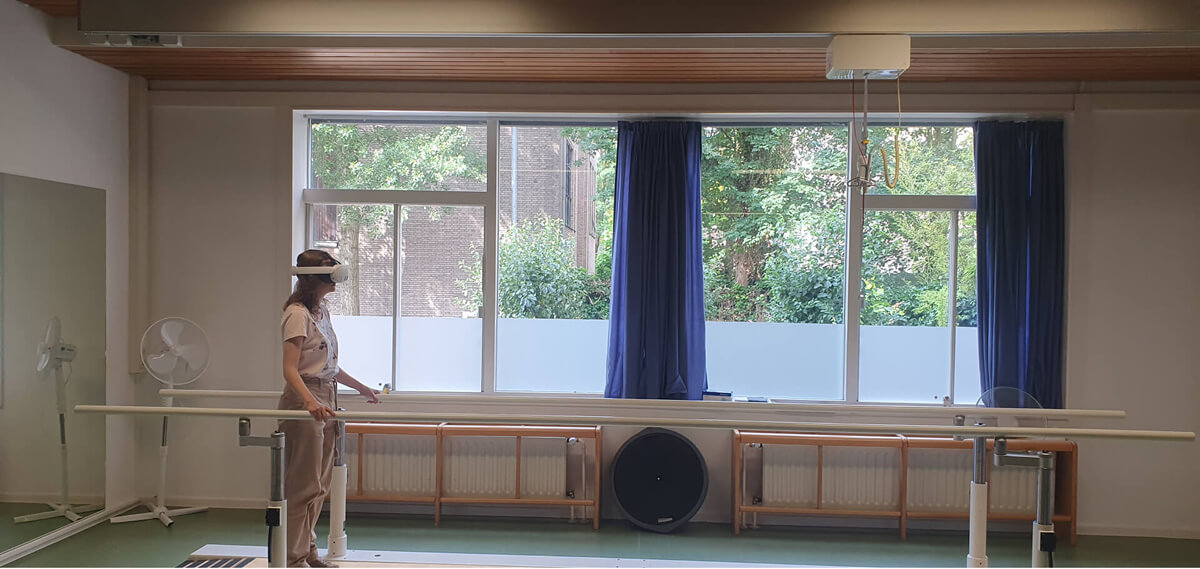By: Joanna, Product Owner
At HoloMoves, we create Mixed Reality games that are used for intensive patient rehabilitation. To ensure that this intersection of technology and care gives optimal results, close collaboration between the development team and healthcare professionals is crucial. But how can you get this right? At HoloMoves, we use the following principles to foster collaboration:
Bridging the knowledge gap
Game designers bring expertise in creating engaging, interactive experiences, while healthcare professionals provide crucial insights into medical needs and patient behavior. In addition to a development team that is interested and immersed in healthcare, HoloMoves also has an in-house physical therapist with a background in rehabilitation who is actively involved in the development of our new applications. By involving the different perspectives of both game design and medical knowledge from the start of a project, we can design products that fit even better in the context of healthcare.
Furthermore, we also always involve various therapists and physicians working in healthcare who might use our product. We do this in our research project by conducting interviews. It is important to find out what the underlying problems are that healthcare professionals face and what limitations we need to take into account. By speaking to people in different rehabilitation centers and hospitals, we get a broader picture of the different interests and requirements, which gives us the pillars for a new design.

User-centered design
Every developer has ideas and preconceptions about how his or her game design will work. We test the games internally and have opinions on them. However, we always keep in mind that we are not the target audience. Even with years of experience, we as a development team can still be surprised at the reactions and behavior of patients while playing a new prototype.
Especially with physically or mentally vulnerable audiences, it is easy to be mistaken about the limitations that players may encounter. Therefore, it is enormously important to test regularly with real end users in actual contexts. In our case, that means visiting rehabilitation centers and testing with different users during group therapy.
Test results
After a game is finished, our team is not finished. We at HoloMoves try to continuously gather feedback from the field to improve and further develop our products as needed. For new customers, it is especially important to know what effect our games have. Therefore, we work extensively with university students and PHDers to research this. By continually initiating investigations and gathering information, our internal knowledge grows, which we also incorporate into the design of our next game.
Conclusion
By keeping the lines between development and care short and by continuing to research, we can make our products better fit the context and target group within rehabilitation. First, knowledge sharing is important to get off to a good start and to develop prototypes. Then we repeatedly test our prototypes with end users in the final context. And finally, we continue to learn and grow as a company and as a team by taking feedback from our customers and initiating studies on the effectiveness of our products.

